Docker and DevSecOps: Integrating Security in 2024’s Development Pipeline
In 2024, DevSecOps—the integration of security into every phase of the software development lifecycle—is more critical than ever. With Docker leading the charge in containerized development, organizations are focusing on embedding security practices throughout their DevOps workflows. This article explores how Docker supports secure development pipelines and the best practices for integrating security into every stage of the process.
What is DevSecOps?
DevSecOps brings together development, security, and operations teams to ensure that security is not an afterthought but an integral part of the software development process. The goal is to deliver secure software faster by automating security tasks and shifting security left in the development lifecycle.
Key Benefits of DevSecOps:
- Proactive Security: Identify vulnerabilities early in the development phase.
- Automation of Security Tasks: Use tools to automate security scanning and compliance checks.
- Improved Collaboration: Break down silos between development, security, and operations teams.
Why Docker is Essential for DevSecOps in 2024
Docker plays a crucial role in DevSecOps by offering a secure, consistent environment for application development and deployment. Docker’s containers are inherently isolated, making them ideal for building secure applications. With new tools and integrations, Docker ensures that security is woven into every part of the development pipeline.
Latest Trends in Docker and DevSecOps for 2024
1. Shift-Left Security with Automated Scanning
In 2024, Docker supports shift-left security, encouraging developers to address vulnerabilities early in the development cycle.
Key Features:
- Automated Image Scanning: Docker scans container images for vulnerabilities as soon as they are built.
- Integration with CI/CD Tools: Docker integrates with Jenkins, GitHub Actions, and GitLab CI to automate security scans.
- Prevention of Vulnerability Propagation: Stop vulnerable images from progressing through the pipeline.
2. Role-Based Access Control (RBAC)
Docker enhances RBAC policies to give teams better control over who can access and modify container environments.
Key Features:
- Granular Permissions: Assign roles to users with specific access to services, containers, and clusters.
- Audit Logs: Track access and changes to container environments for compliance purposes.
- SSO Integration: Integrate with Single Sign-On (SSO) systems for streamlined authentication.
3. Securing CI/CD Pipelines with Docker
Secure CI/CD pipelines are essential for ensuring that vulnerabilities are not introduced during automated deployments.
Key Features:
- Immutable Containers: Use immutable containers to prevent tampering.
- Digital Signatures for Images: Docker supports Notary v2 for signing and verifying images.
- Secure Secrets Management: Manage sensitive information using encrypted secrets storage.
4. Kubernetes and DevSecOps Integration
Kubernetes is essential for orchestrating containers, and Docker provides the tools necessary to secure workloads across clusters.
Key Features:
- Pod Security Policies: Enforce security policies at the pod level in Kubernetes.
- Network Segmentation: Use Docker to implement network policies and restrict container communication.
- Self-Healing Security Systems: Automate remediation processes for compromised containers.
5. Zero-Trust Security Model for Containers
In 2024, organizations are adopting zero-trust security models for their container environments, ensuring that every container and service must be verified and authenticated.
Key Features:
- Container Isolation: Use Docker to ensure that each container runs in a secure, isolated environment.
- Mutual TLS Authentication: Enable encrypted communication between containers.
- Continuous Monitoring: Use Docker’s monitoring tools to detect and respond to suspicious activity in real-time.
Table: Docker and DevSecOps Feature Comparison
| Feature | Description | Benefit |
|---|---|---|
| Automated Scanning | Scan images for vulnerabilities in CI/CD | Prevent vulnerabilities early |
| RBAC Policies | Granular access control for containers | Improve security and compliance |
| Secure CI/CD Pipelines | Immutable containers and signed images | Ensure tamper-proof deployments |
| Kubernetes Integration | Secure workloads across clusters | Automate security in orchestration |
| Zero-Trust Model | Enforce container isolation and authentication | Protect against unauthorized access |
Key Takeaways
- Shift-left security with Docker ensures that vulnerabilities are identified and resolved early in the development pipeline.
- RBAC and SSO integration provide fine-grained control and secure access to container environments.
- Immutable containers and signed images guarantee that deployments are tamper-proof.
- Kubernetes integration with Docker enhances orchestration security through policies and automated remediation.
- Zero-trust models ensure that every container and service is authenticated and verified for enhanced protection.
FAQ
How does Docker support DevSecOps?
Docker supports DevSecOps by providing automated image scanning, secure CI/CD pipelines, and tools for access control and secrets management.
What is shift-left security, and how does Docker implement it?
Shift-left security focuses on identifying vulnerabilities early in the development process. Docker implements it through automated scanning and CI/CD integration.
How does Kubernetes integration enhance DevSecOps with Docker?
Kubernetes allows Docker containers to be orchestrated securely with pod security policies, network segmentation, and automated security remediation.
What are immutable containers, and why are they important?
Immutable containers cannot be modified once deployed, ensuring that production environments remain tamper-proof and secure.
Conclusion
Docker continues to play a vital role in integrating security into DevOps workflows, supporting the transition to DevSecOps. By embedding security tools, automated scanning, and RBAC policies, Docker ensures that applications are secure throughout the development pipeline. With the rise of zero-trust models and Kubernetes integration, Docker enables organizations to build, deploy, and manage secure containerized applications effectively in 2024.
